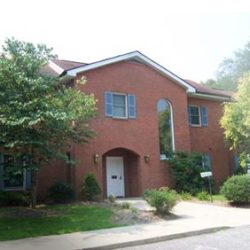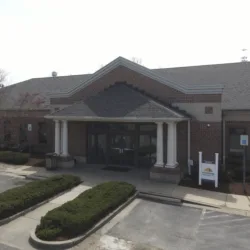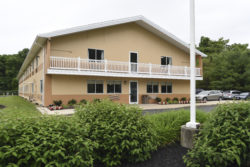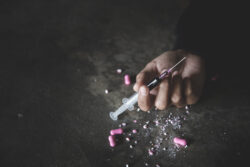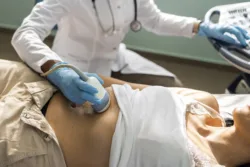4 Risk Factors for Substance Use Disorders in Maryland
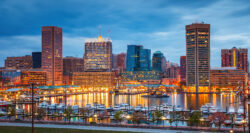
Drug and alcohol abuse has plagued the United States, and the state of Maryland is no exception.
In recent years, Maryland has implemented significant initiatives in order to combat the rising alcohol and substance use disorders across the state, but despite these efforts, the rates still continue to rise.
More than ever, it’s important to be aware of the most common risk factors that can lead to substance disorders. This is so you can not only take the necessary preventative measures but know when you or someone you love needs to seek professional help.
In this article, we’re going to discuss the prevalence of substance use disorders in Maryland, as well as the top four risk factors for substance use disorders in the state.
Risk factors for substance use disorder
The reasons that someone develops a substance use disorder or addiction are going to be unique to their individual mental health, life circumstances, history and more. Therefore, the causes can be diverse and sometimes difficult to identify.
There are, however, four common risk factors for substance use disorders in Maryland.
1. Increase in opioid prescriptions
The opioid epidemic has impacted just about every state in the country, Maryland included, and Baltimore, most notably. The number of criticisms is rising against healthcare providers and physicians alike for being too quick to provide this highly addictive drug, but the prescription rates and fatal overdoses continue to rise—tripling in the 1990s.
2. Low price of alcohol
Maryland’s alcohol excise taxes are some of the lowest in the nation; the state’s beer and wine tax rates are low in the ranking, but its liquor tax rate is the lowest in the country. This indirectly enables young adults to be able to buy more alcohol more frequently, and in many cases, this is how youth (people under 18) are given access to alcohol. The younger the individual, the more easily an alcohol dependence can develop due to the active development of the brain.
3. High substance trafficking in Baltimore
Baltimore has long been afflicted with a persistently high crime rate which, in 1998, was double the national average (murder was more than three times more frequent than in any other city). One of the most aggressive and prevalent crimes in the state is drug trafficking which consistently fuels both property crimes and violent crimes.
4. The fatherless epidemic
While there isn’t ever a single reason why someone develops a substance use disorder (mental health, environment and more all play a role), the correlation between the number of fatherless homes, substance use disorders and crime cannot be ignored. In Maryland, nearly 60 percent of all homes are single-parent households, and it’s even higher in Baltimore, the crime center of the state.
Countless studies have reinforced that children in father-absent homes are not only more likely to grow up in poverty but have a greater inclination towards crime and an increased risk of turning to substance abuse as a coping mechanism.
Maryland substance statistics
The Maryland Department of Health and Mental Hygiene and the University of Maryland School of Pharmacy united their efforts to provide the below statistics on the prevalence of substance use disorders in the state.
- 60 percent of Maryland citizens (12 and over) consume alcohol monthly
- Binge drinking has markedly increased in adults over the age of 26
- The number of alcoholism-induced hospitalizations continues to rise annually
- Opioid abuse, both through prescription and illicit gain, is more prevalent than ever
- The number of drug-related emergency admissions and hospitalizations (most notably, from opioids) has spiked in the last four years
- The use of synthetic cannabinoids (also known as “fake weed,” a man-made chemical created to look like marijuana, but that produces extreme psychological reactions) has been steadily rising in recent years.
The use of synthetic cannabinoids has become one of the most popular reasons emergency calls are placed to the Maryland Poison Center, amongst others. Maryland’s substance use problem is widespread, across the state and with the usage of various substances leads to higher rates.
Get help today
If you or someone you love is struggling with a drug or alcohol use disorder, reach out to a Maryland addiction recovery center. When left untreated, addiction can be detrimental to the health and life of a person, and in the worst cases, lead to a potentially fatal overdose.
Pyramid Healthcare is a leading healthcare system, specializing in client-driven and sustainable behavioral and mental health treatment.
Our team of compassionate professionals is committed to identifying your unique needs so as to provide you-focused solutions to help you recover, heal and improve your overall quality of life.
To learn more about how we can help you in your recovery journey, contact us today at 301-997-1300.
Drug and alcohol abuse has plagued the United States, and the state of Maryland is no exception.
In recent years, Maryland has implemented significant initiatives in order to combat the rising alcohol and substance use disorders across the state, but despite these efforts, the rates still continue to rise.
More than ever, it’s important to be aware of the most common risk factors that can lead to substance disorders. This is so you can not only take the necessary preventative measures but know when you or someone you love needs to seek professional help.
In this article, we’re going to discuss the prevalence of substance use disorders in Maryland, as well as the top four risk factors for substance use disorders in the state.
Risk factors for substance use disorder
The reasons that someone develops a substance use disorder or addiction are going to be unique to their individual mental health, life circumstances, history and more. Therefore, the causes can be diverse and sometimes difficult to identify.
There are, however, four common risk factors for substance use disorders in Maryland.
1. Increase in opioid prescriptions
The opioid epidemic has impacted just about every state in the country, Maryland included, and Baltimore, most notably. The number of criticisms is rising against healthcare providers and physicians alike for being too quick to provide this highly addictive drug, but the prescription rates and fatal overdoses continue to rise—tripling in the 1990s.
2. Low price of alcohol
Maryland’s alcohol excise taxes are some of the lowest in the nation; the state’s beer and wine tax rates are low in the ranking, but its liquor tax rate is the lowest in the country. This indirectly enables young adults to be able to buy more alcohol more frequently, and in many cases, this is how youth (people under 18) are given access to alcohol. The younger the individual, the more easily an alcohol dependence can develop due to the active development of the brain.
3. High substance trafficking in Baltimore
Baltimore has long been afflicted with a persistently high crime rate which, in 1998, was double the national average (murder was more than three times more frequent than in any other city). One of the most aggressive and prevalent crimes in the state is drug trafficking which consistently fuels both property crimes and violent crimes.
4. The fatherless epidemic
While there isn’t ever a single reason why someone develops a substance use disorder (mental health, environment and more all play a role), the correlation between the number of fatherless homes, substance use disorders and crime cannot be ignored. In Maryland, nearly 60 percent of all homes are single-parent households, and it’s even higher in Baltimore, the crime center of the state.
Countless studies have reinforced that children in father-absent homes are not only more likely to grow up in poverty but have a greater inclination towards crime and an increased risk of turning to substance abuse as a coping mechanism.
Maryland substance statistics
The Maryland Department of Health and Mental Hygiene and the University of Maryland School of Pharmacy united their efforts to provide the below statistics on the prevalence of substance use disorders in the state.
- 60 percent of Maryland citizens (12 and over) consume alcohol monthly
- Binge drinking has markedly increased in adults over the age of 26
- The number of alcoholism-induced hospitalizations continues to rise annually
- Opioid abuse, both through prescription and illicit gain, is more prevalent than ever
- The number of drug-related emergency admissions and hospitalizations (most notably, from opioids) has spiked in the last four years
- The use of synthetic cannabinoids (also known as “fake weed,” a man-made chemical created to look like marijuana, but that produces extreme psychological reactions) has been steadily rising in recent years.
The use of synthetic cannabinoids has become one of the most popular reasons emergency calls are placed to the Maryland Poison Center, amongst others. Maryland’s substance use problem is widespread, across the state and with the usage of various substances leads to higher rates.
Get help today
If you or someone you love is struggling with a drug or alcohol use disorder, reach out to a Maryland addiction recovery center. When left untreated, addiction can be detrimental to the health and life of a person, and in the worst cases, lead to a potentially fatal overdose.
Pyramid Healthcare is a leading healthcare system, specializing in client-driven and sustainable behavioral and mental health treatment.
Our team of compassionate professionals is committed to identifying your unique needs so as to provide you-focused solutions to help you recover, heal and improve your overall quality of life.
To learn more about how we can help you in your recovery journey, contact us today at 301-997-1300.

